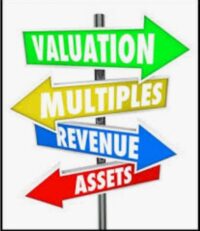Book value and written down value are both accounting terms used to evaluate the worth of an asset, but they differ in their calculation and purpose. Here’s an explanation of each:
- Book Value: Book value, also known as carrying value or net asset value, represents the value of an asset as recorded on a company’s balance sheet. It is calculated by subtracting accumulated depreciation from the original cost (or historical cost) of the asset. Book value is typically used for reporting purposes and determining the financial health of a company. It provides a snapshot of the asset’s value based on historical data, regardless of its current market value.
For example, if a company purchased a piece of equipment for 10,000 and has recorded 4,000 in accumulated depreciation, the book value of the equipment would be 6,000 (10,000 – 4,000).
Book value, also known as carrying value or net asset value, is the value of an asset as recorded in the accounting books. It represents the historical cost of the asset minus any accumulated depreciation or amortization. Book value is typically used for fixed assets like property, plant, and equipment. It is calculated as:
Book Value = Historical Cost – Accumulated Depreciation
For example, if a company purchased a machine for 10,000 and it has accumulated 3,000 in depreciation, the book value of the machine would be 7,000.
Book value provides a conservative estimate of an asset’s value on the company’s balance sheet, as it reflects the amount the company has invested in the asset net of depreciation.
- Written Down Value: Written down value, also known as depreciated value or net realizable value, represents the estimated current value of an asset after accounting for depreciation. It takes into account the wear and tear, obsolescence, or any impairment that may have occurred since the asset was acquired. The purpose of written down value is to reflect the actual worth of an asset on the company’s books at a given point in time.
Written down value is typically used for internal decision-making, such as determining whether an asset should be replaced, sold, or written off. It helps companies assess the economic benefit or loss they can derive from an asset.
Using the previous example, if the piece of equipment is estimated to have a market value of 5,000 due to depreciation or other factors, the written down value would be 5,000.
Written down value, also known as net realizable value or net recoverable value, is the estimated current value of an asset. It is used when the asset’s market value has declined below its historical cost or when the asset has suffered impairment due to obsolescence, damage, or other factors. Written down value is relevant for assets that are expected to generate future cash flows, such as inventory or accounts receivable.
Written Down Value = Historical Cost – Impairment Loss
For example, if a company has inventory items that were purchased for 50,000 but are now estimated to have a market value of only 40,000 due to obsolescence, the written down value of the inventory would be 40,000.
Written down value reflects a more realistic estimate of an asset’s current worth, taking into account any impairments or declines in market value that may have occurred since its purchase.
In summary, book value represents the historical cost of an asset minus accumulated depreciation, while written down value reflects the estimated current value of an asset, considering impairments or declines in market value.
Book value is commonly used for fixed assets, while written down value is applicable to assets with potential future cash flows, such as inventory or accounts receivable.
Book value represents the value of an asset as recorded on the balance sheet, while written down value reflects the estimated current worth of an asset after accounting for depreciation or impairment. Book value is historical and used for reporting, while written down value is more relevant for decision-making purposes.


